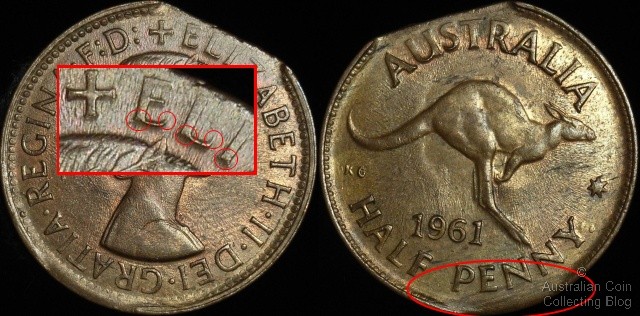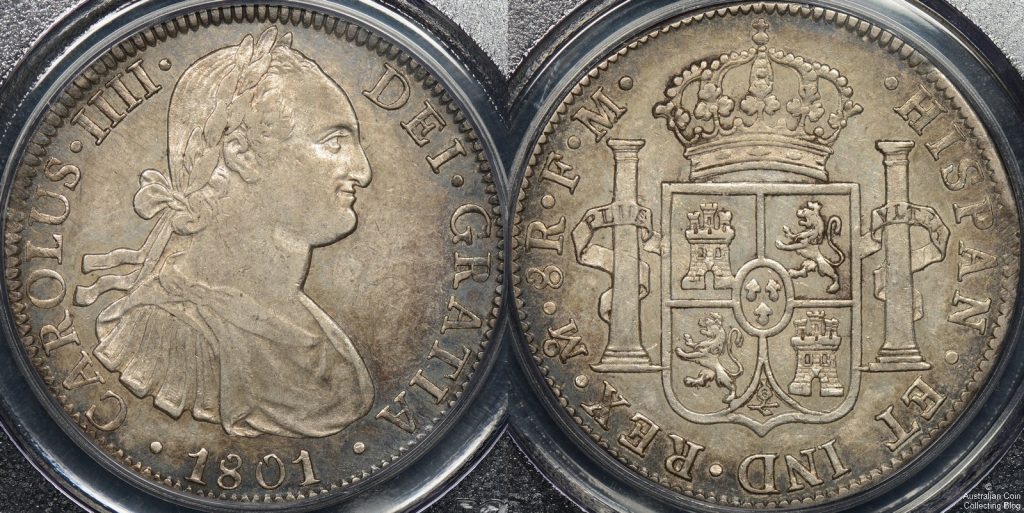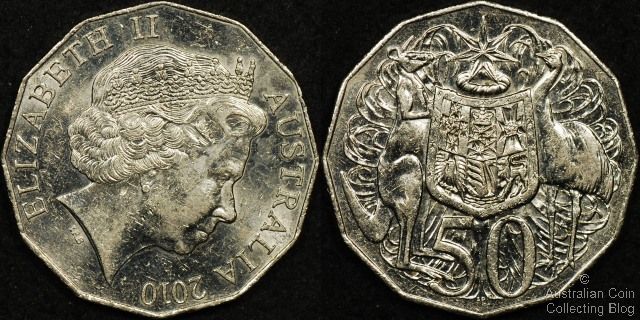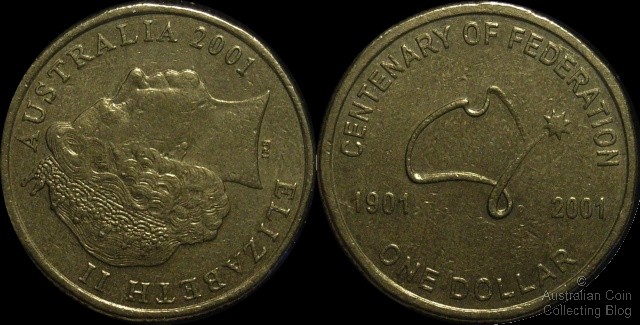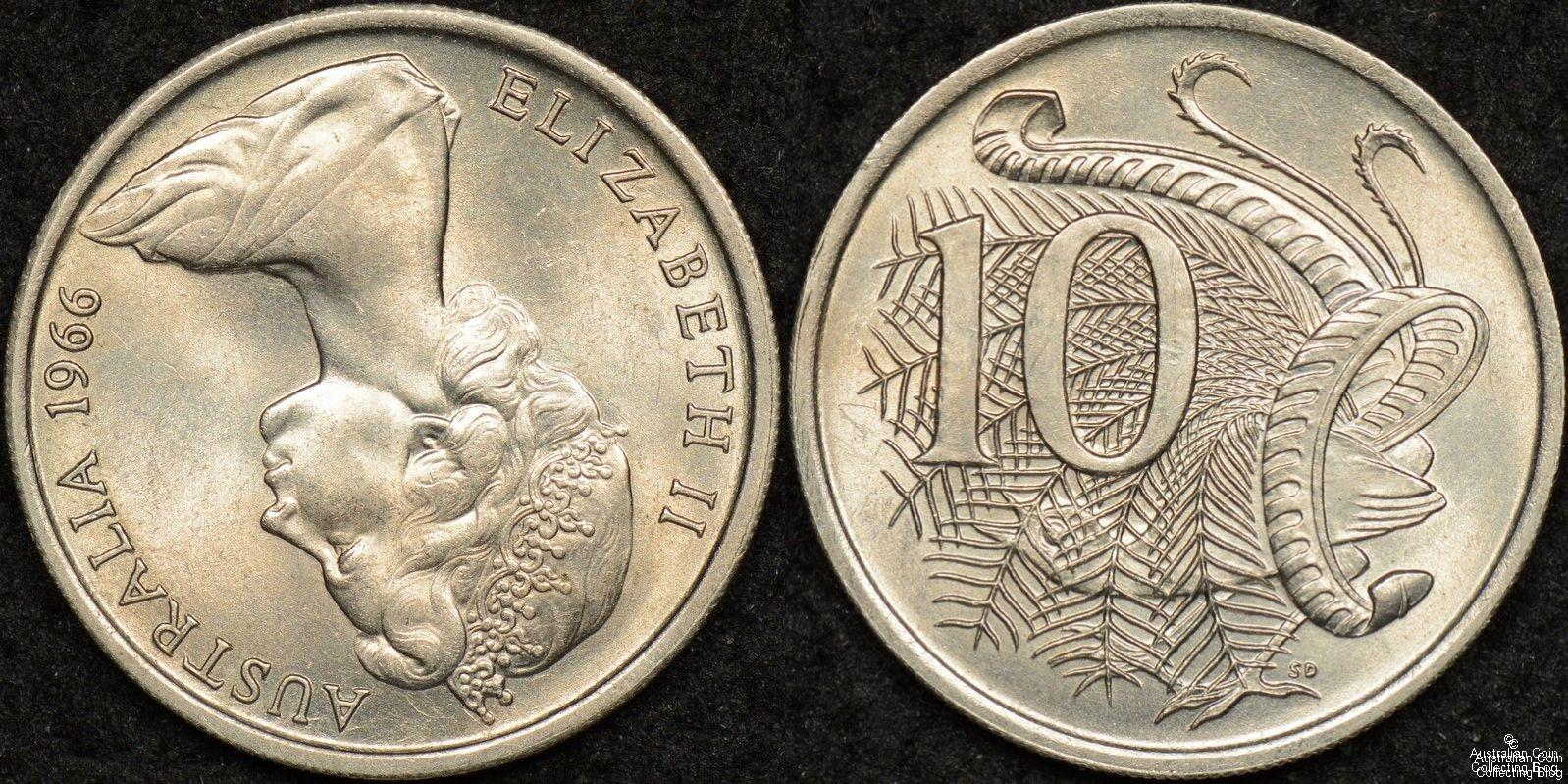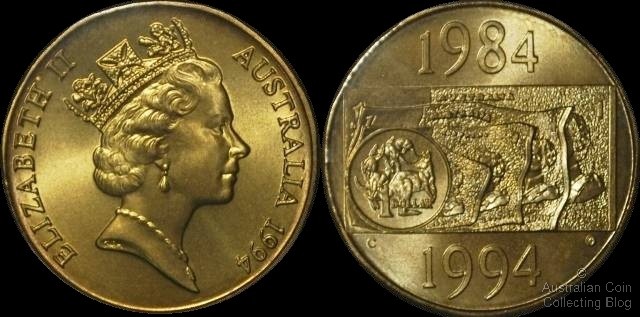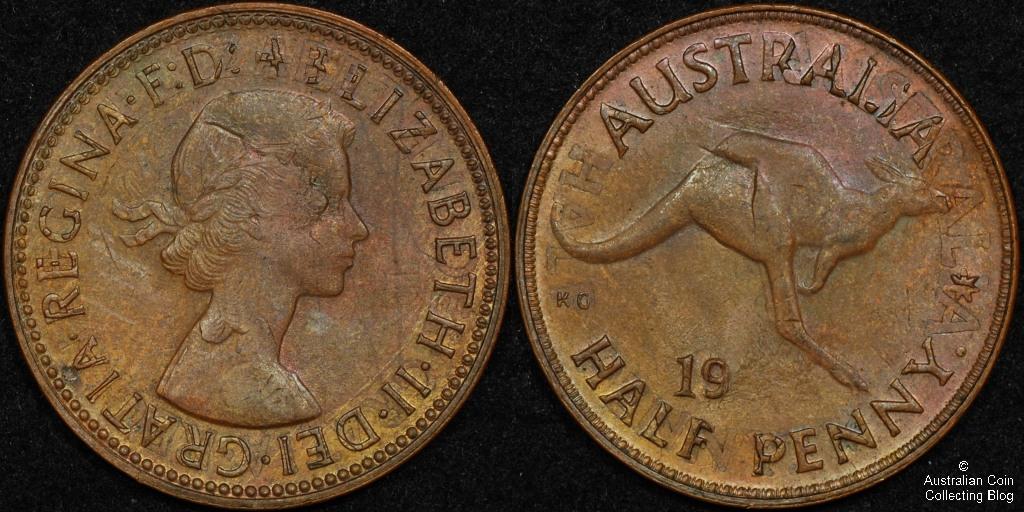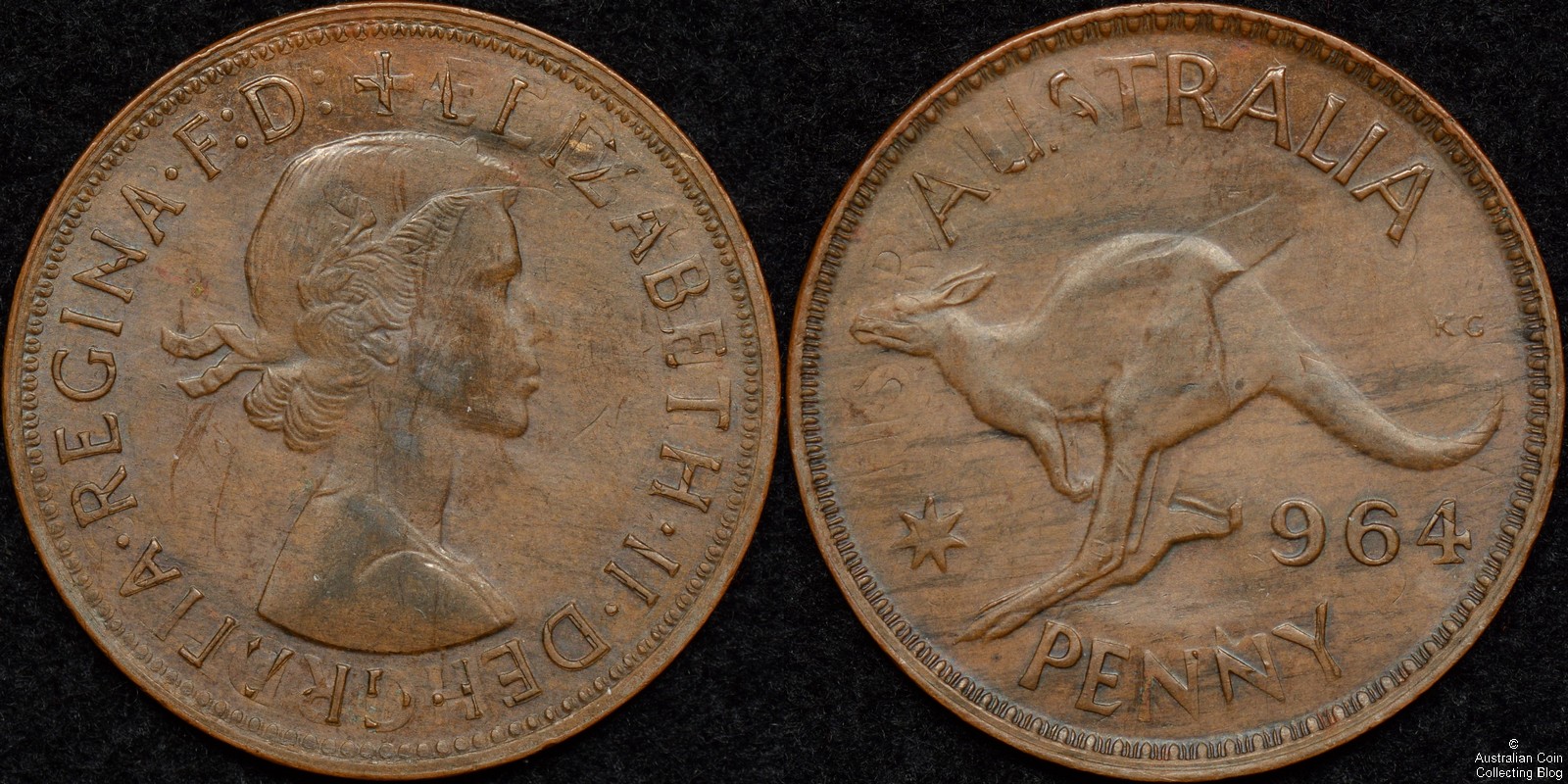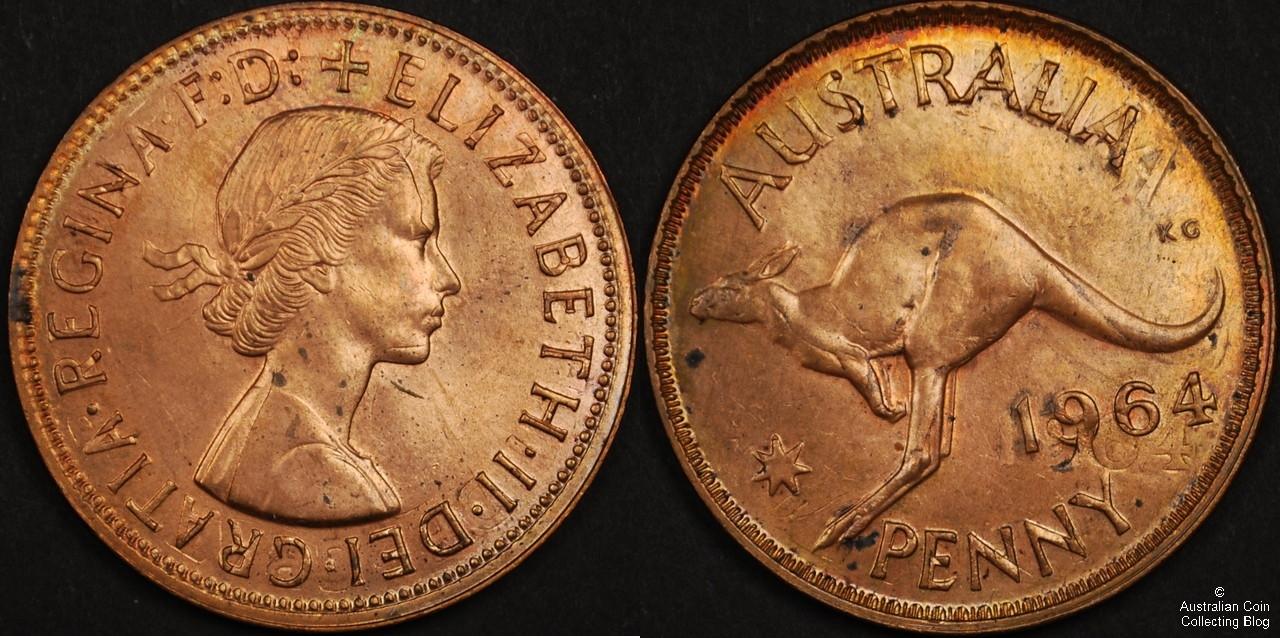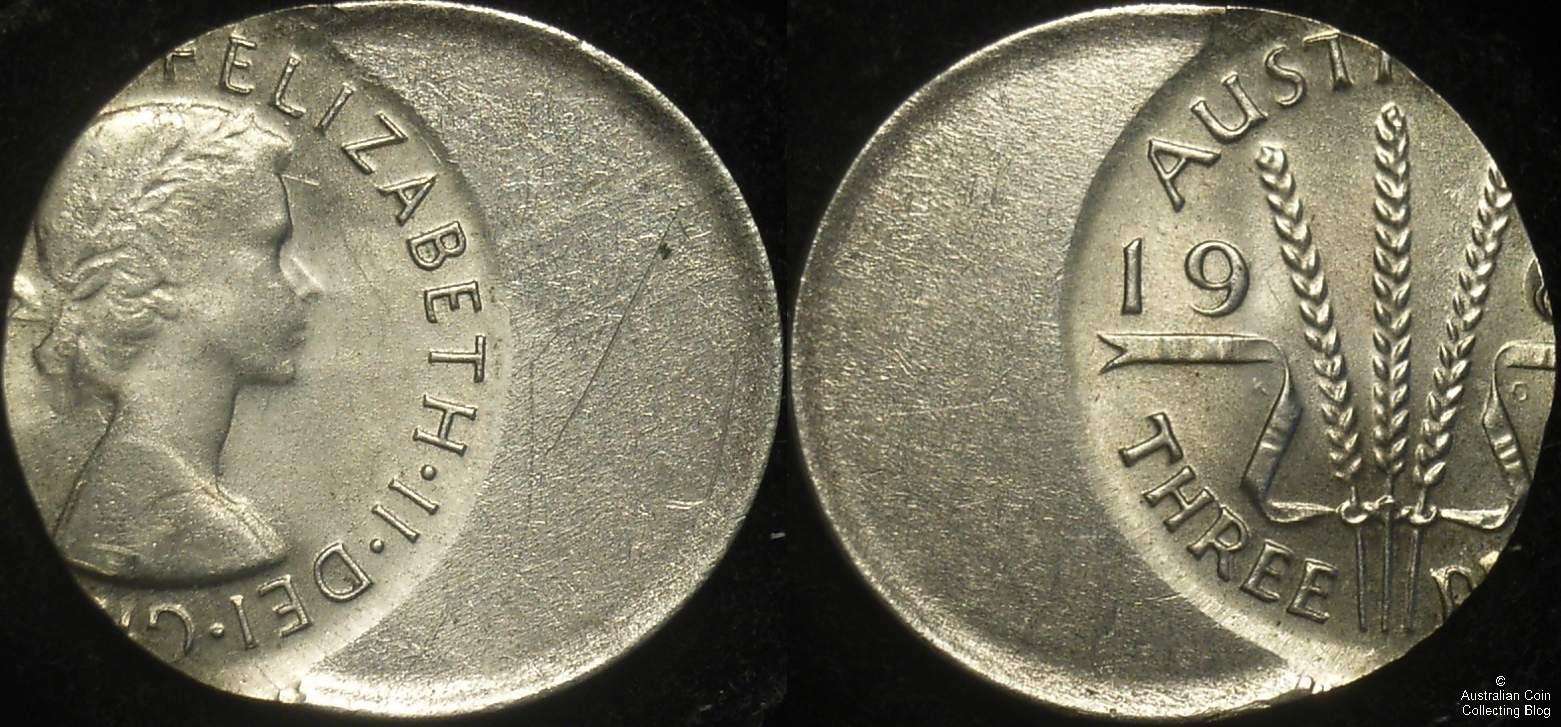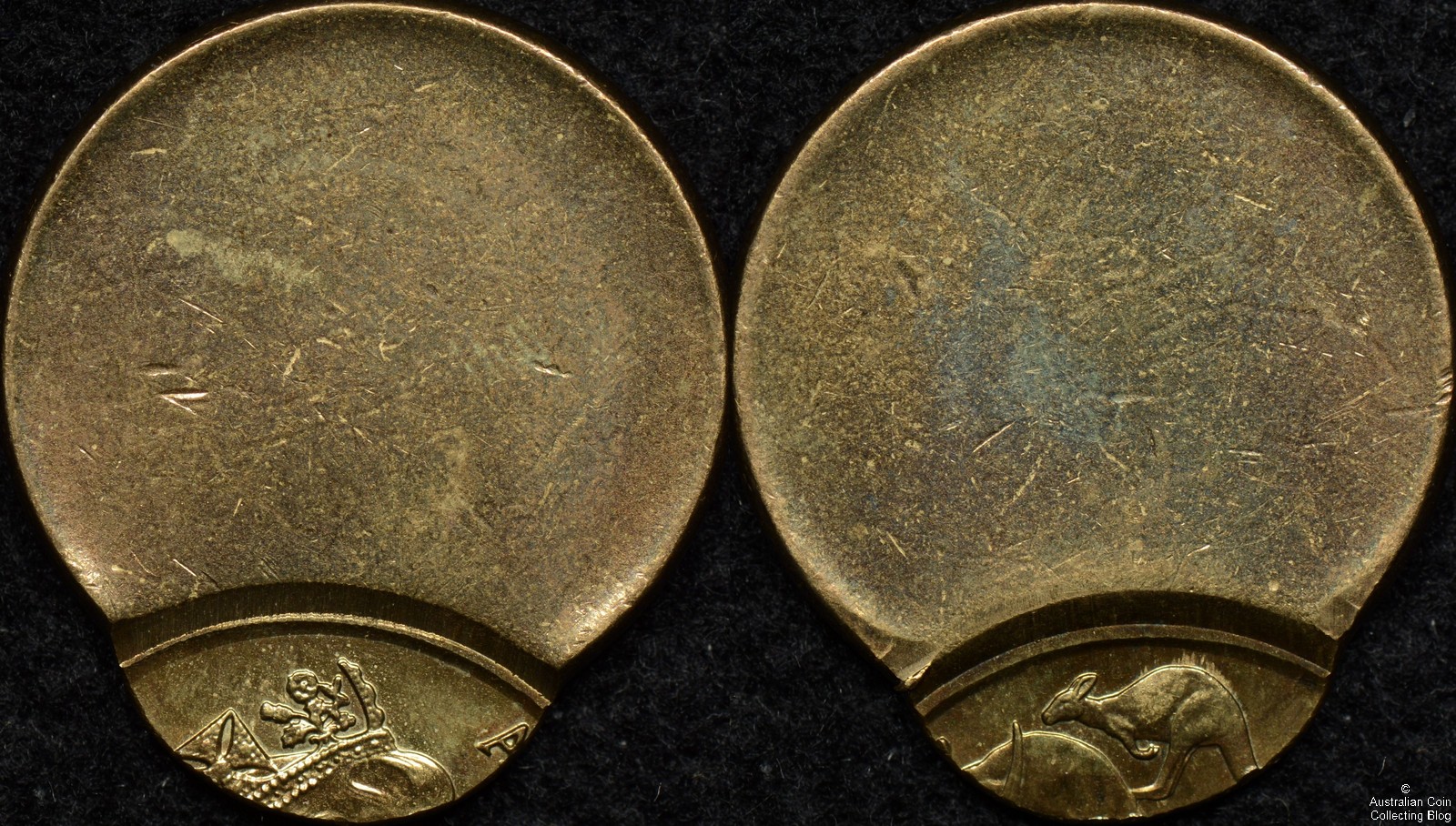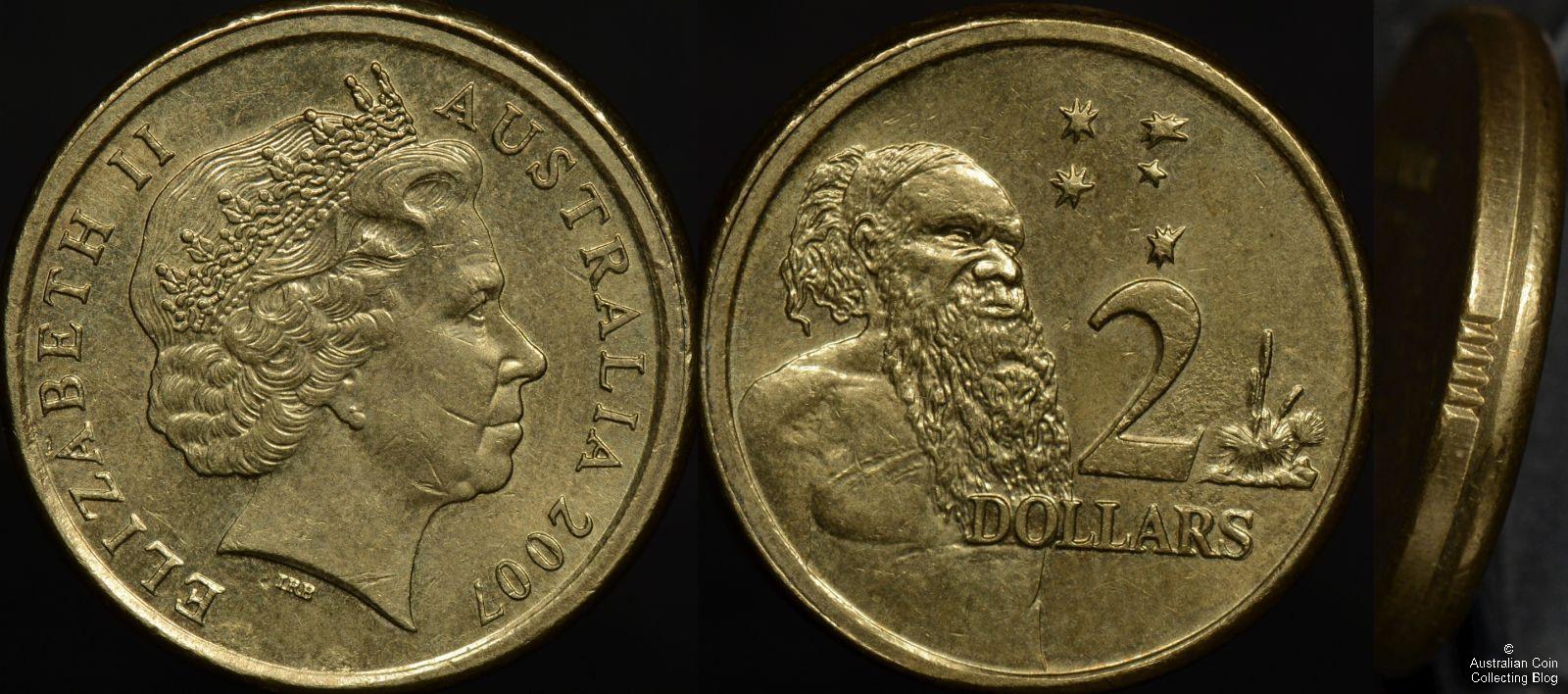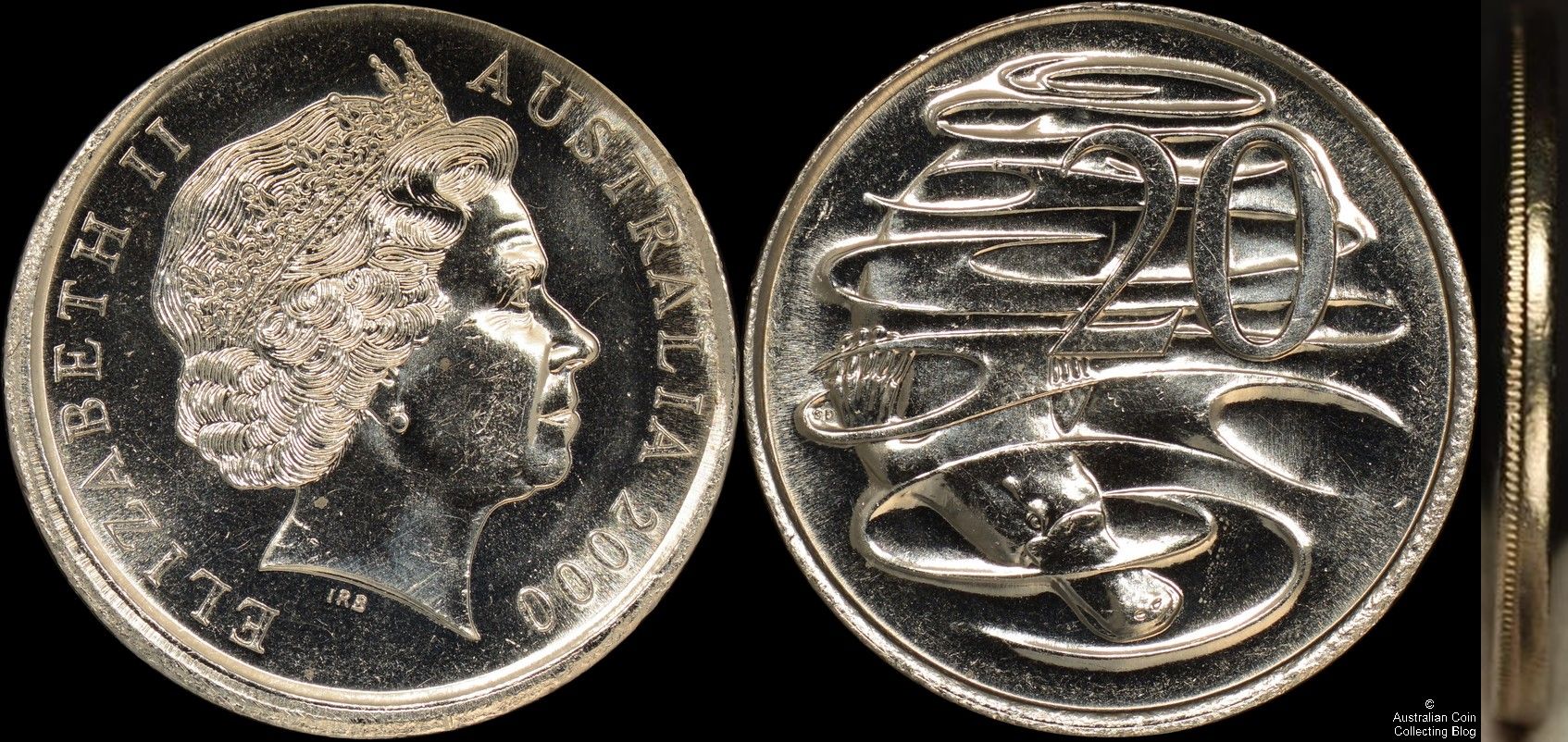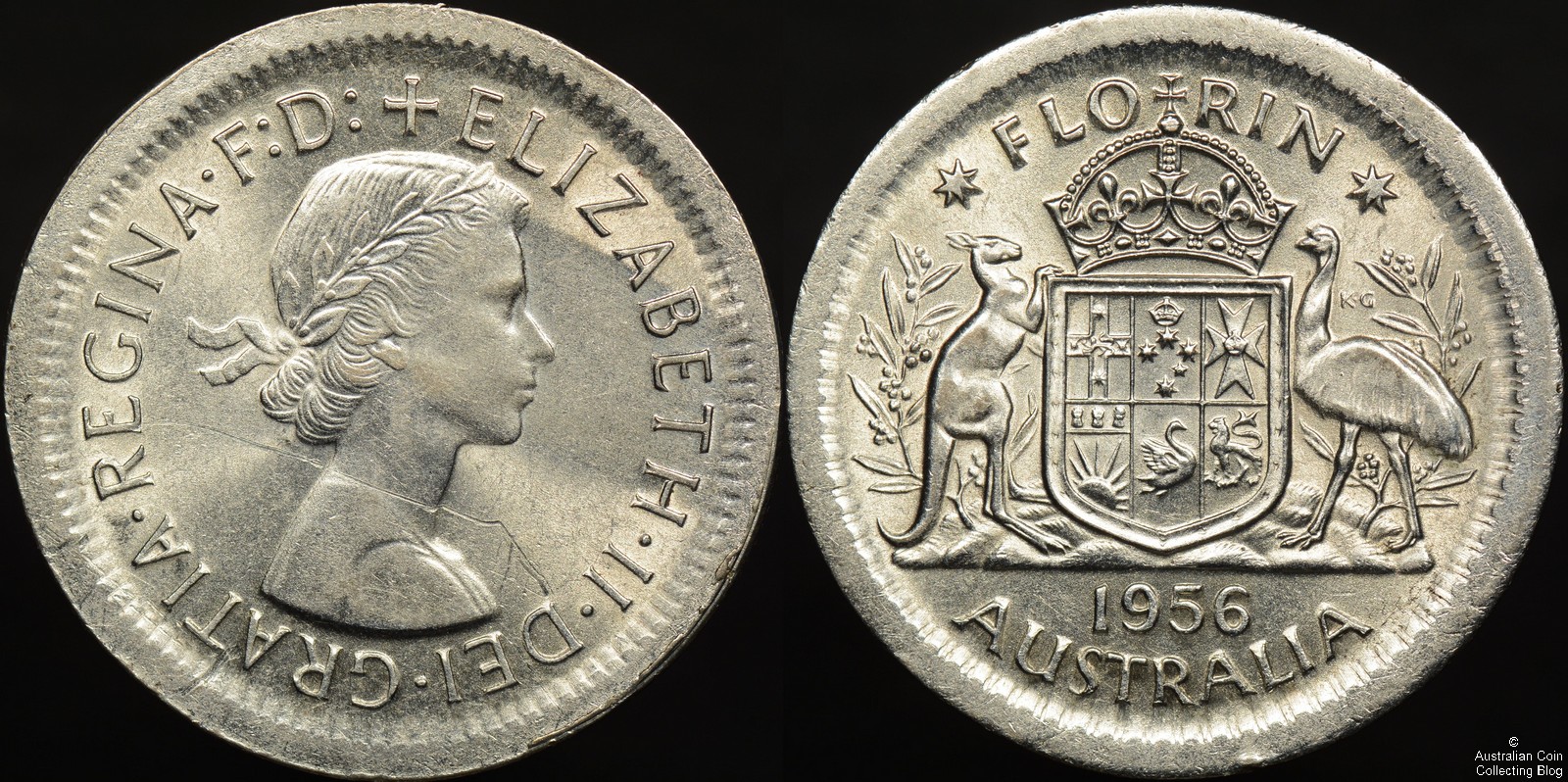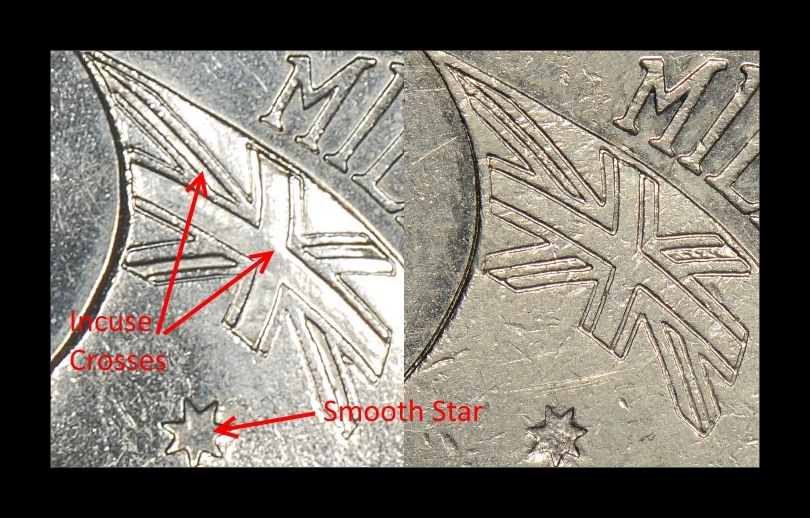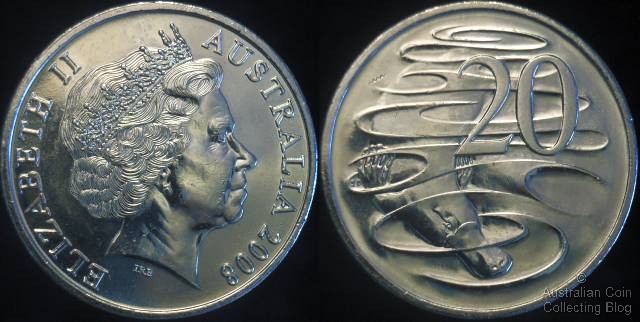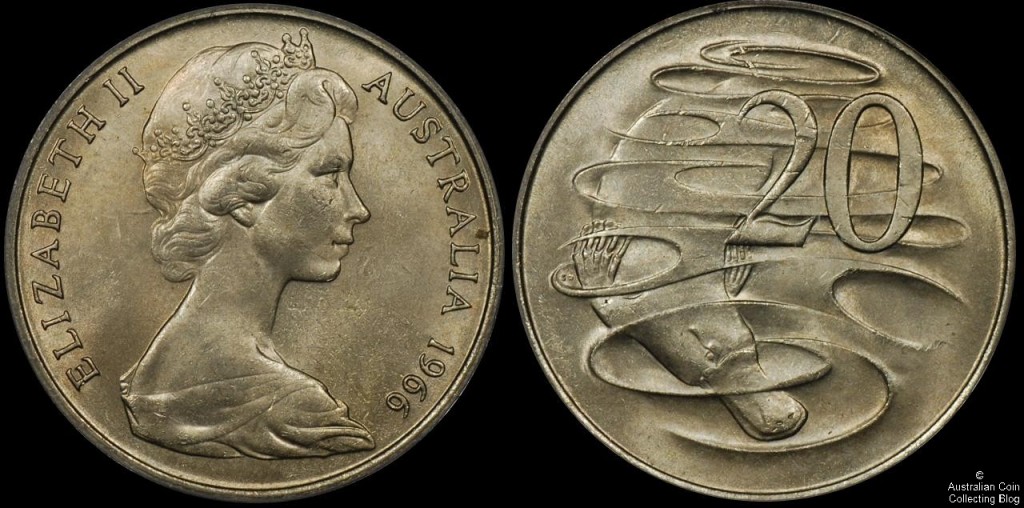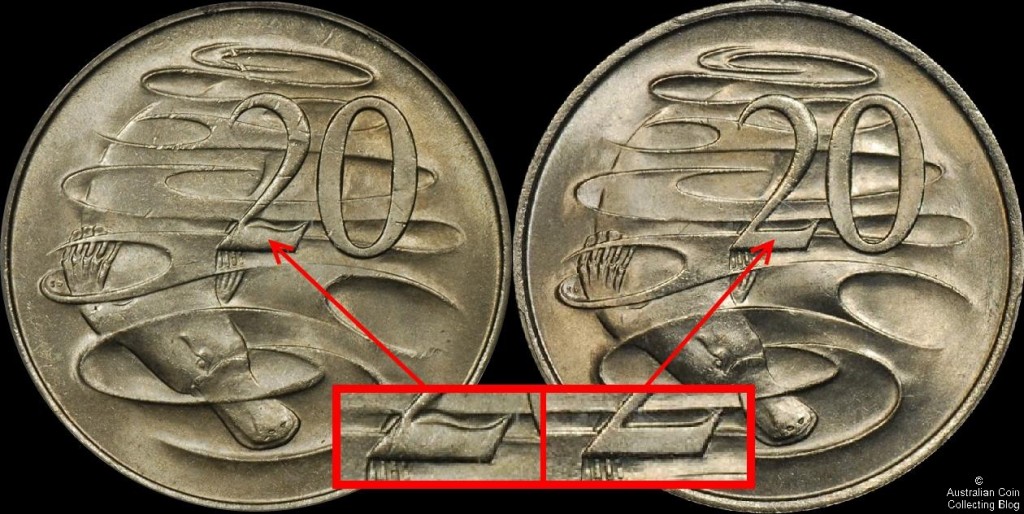We’ve looked at all the different types of clips before and how they’ve occured but how can you really tell if you have a genuine clip or not?
Often it is difficult to tell if a clip is a genuine error from the mint or if someone has simply used a guillotine or tin snips to manufacture the defect. There are a few distinguishing features that will help you determine a genuine coin clip. A genuine clip will show at least one of these effects.
1. The Blakesley Effect: named after the American numismatist who first described this defect. It occurs as a weakness on the rim opposing the clip site. This only occurs on coins in which the planchets have been pre-rimmed before striking. Coins that are rimmed during the striking process of the coin such as the Australian 50c will not show the Blakesley effect. You can see an example of this effect in the right image outlined in red below.
2. Fish-Tailing: is a deformation of the lettering in the legend or on the design around the clip site. Instead of the edges of the letters being straight, they have an inward lip and the metal has flowed outwards at the edges. Due to the incomplete planchet (the clip) the metal has not been contained during the striking so the edges of the letters or edges of the design have fish-tailed outwards. This will occur on the lettering or on any part of the design near the clip site. Often this might only be distinguishable under magnification, the image below left has been highlighted so you can see the fishtailing affecting this halfpenny.
3. Strike Weakness: will sometimes occur near the clip site. This is due to the planchet being slightly thinner on the edge at the clip. Because of the missing metal it will flow into the void creating a weak strike or a weakness in the area near the clip. This is clearly shown in the image below left.
